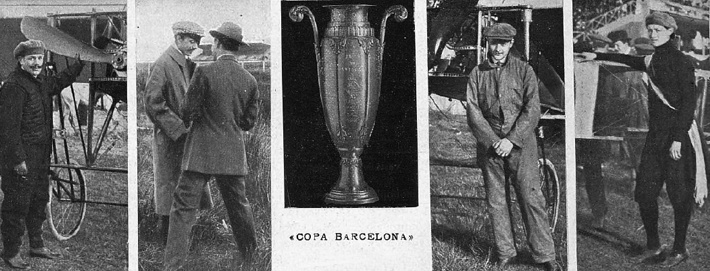Barcelona, Spain, May 1st - 8th, 1910
A windy meeting on the Mediterranean coast
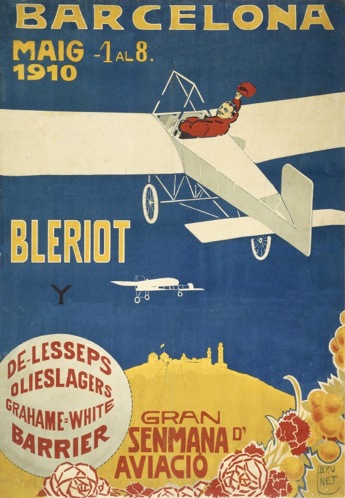
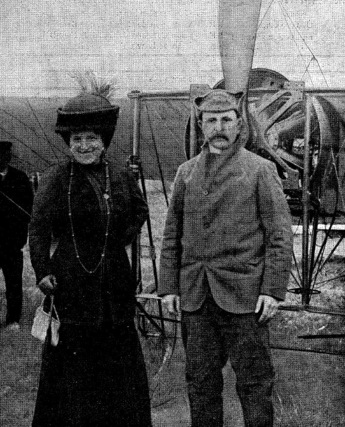
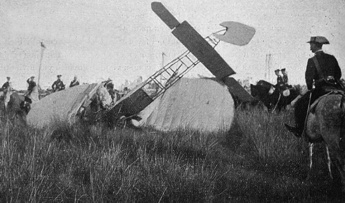
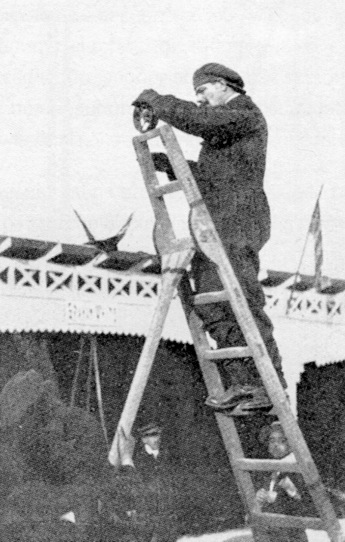

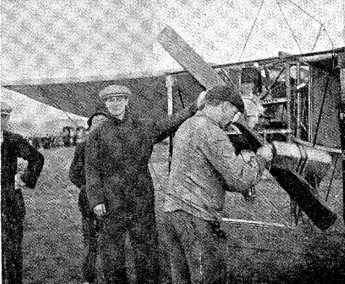
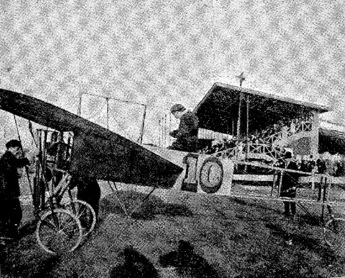
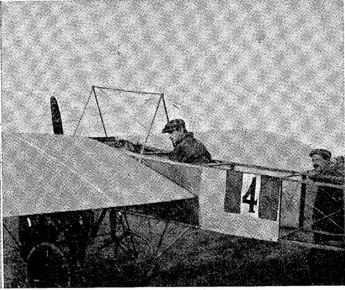
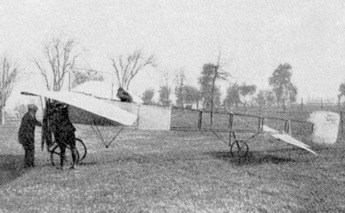
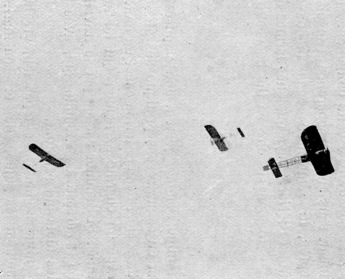
In 1910 Barcelona was the second biggest town of Spain, its
population of 590,000 inhabitants only narrowly beaten by the
capital Madrid. The first flights in Barcelona had been performed
by Julien Mamet in February. He was followed by Louis Gaubert, who
made some sensational long flights over the centre of the town in
the end of March. As everywhere, aviation interest was booming and
Barcelona was obviously an attractive place for staging an aviation
meeting.
The aviation week of Barcelona was organized by the same companies
as the Seville meeting three weeks earlier: the Blériot dealers
"Borel et Cie" of Paris and the "Sociedad Española
de Aviación" of Madrid, in cooperation with the local city
council. Like in Seville the meeting was held on a horse-racing
course, the "Hipódromo Can Tunis" three kilometres
southwest of the city centre. It had not been easy to get access to
the race course, since the owners, the "Casa Antúnes",
had demanded a very high rent and according to one newspaper it
would have been impossible to agree terms if it hadn't been for
the negotiating power of a "well-known sportsman, who's
name we cannot divulge".
Initially a larger starting field had been intended, but it was
diminished before the meeting when Claude Grahame-White, who had
just been beaten by Louis Paulhan to the "Daily Mail"
London-Manchester prize on April 27th, withdrew. Louis Gaubert was
also out, having crashed his Voisin at Zaragoza on April 25th. This
left a field of four pilots, all in Blériots: René Barrier, Jacques
de Lesseps, Jan Olieslagers and René Simon, the latter being called
in as replacement for Grahame-White to make his meeting debut.
Louis Blériot himself would also participate, but out of
competition and only during the first days. Léonce Garnier was also
called in lately and arrived during the meeting, but never made any
flights.
The meeting was staged against the background of some very
unpleasant events one week before: On April 24th, at a small
aviation meeting in Durango near Bilbao, the British pilot
Launcelot Gibbs and the French pilot Georges Prévoteau had been
threatened by knife-armed hooligans, narrowly escaped being
assaulted by a stone-throwing lynch mob and had their planes and
hangars burned when they were not ready to fly at the time
announced by the organizers.
Sunday 1 May
The first day of the meeting dawned cloudy and with light winds,
but around noon the winds increased, accompanied by black rain
clouds. Around four o'clock, when the gates of the airfield
opened, the wind decreased and thousands of people went to the
airfield in hope of seeing the famous Blériot fly. Soon before five
he started his engine and after a short take-off run he made a
three lap flight around the course, once flying behind the
grandstands, before landing after 7:37. Around half an hour later
he repeated the performance, this time with a flying time of 8:20
at altitudes of 10-40 metres.
Already while Blériot was still being applauded the rain started
falling, first lightly but then increasing to a real downpour with
thunder and lightning. The airfield, which was already wet after
heavy rains on the preceding day, was turned into a quagmire, where
cars got stuck and spectators slipped and fell. Further flying was
of course impossible. The reporter of "La Vanguardia"
colourfully described his trials and tribulations of this
disappointing day, getting to the airfield on the delayed trains
and muddy roads, only to be received by overzealous guards who
didn't accept his tickets and papers and in the end not seeing
much.
Monday 2 May
The day started with sunshine but strong winds. After five
o'clock the winds calmed down and like on the day before
Blériot was first out. After a first failed effort he took off at
17:29 and landed perfectly after a two-lap flight of 5:34, forced
down by an engine failure. Four minutes later de Lesseps took off,
but he had only travelled a couple of hundred metres when the wind
changed direction and he was caught by a sudden gust. The machine
crashed from a height of 10-15 metres and stood on its nose,
breaking the propeller, the landing gear and both wings, but de
Lesseps escaped with a bleeding nose and a sprained left wrist. The
winds increased again, and the disappointed and rather sparse
crowds protested and started to leave. In the evening the City
Council held a reception for Blériot, his wife, the other flyers,
the press and other VIPs.
Tuesday 3 May
The day again started with calm weather, which soon deteriorated
with ever stronger winds. The committee of the Aero Club offered a
luncheon to the flyers on mount Tibidabo, while the blue flag (not
black for this meeting!) announced that there would be no flights.
Blériot had stayed an extra day in the hope of a couple of more
flights, but had to leave by train. The Barcelona meeting was one
of his last public appearances as a pilot.
The wind unexpectedly calmed down late in the afternoon and at
18:15 the brave Olieslagers, in spite of the blue flag, took out
his plane and made a long flight, reaching an altitude of 160
metres and flying out over the sea. Barrier had planned to fly
after Olieslagers landed, but the approaching darkness forced him
up while Olieslagers was still in the air. He made a flight of nine
minutes, the engine not running well. Olieslagers finally landed,
having been in the air for 41 minutes, the second longest flight of
the meeting. He received a standing ovation and the organizers sent
for champagne to the pilot.
Wednesday 4 May
Strong winds again prevented flights before the afternoon, and even
then only allowed short, careful flights. At 17:47 Olieslagers made
another spectacular flight, climbing to 200 metres and flying five
large circles, all extending over the sea. Barrier again took off
during his flight, making it two in the air for almost ten minutes.
Olieslagers landed after 27 minutes, having dropped a bouquet of
flowers to the public during his last lap, and the two flyers were
taken on a tour of honour around the airfield in a car. Then young
René Simon, who had arrived during the morning, took off, but his
engine stopped after a short while and he had to land outside the
airfield, thankfully without damage. That was the end of the fourth
day of the meeting.
Thursday 5 May
The fifth day dawned clear, but still with strong winds. A small
crowd waited patiently and were finally rewarded at half past six,
when Barrier made a flight of almost six minutes. Soon after
Barrier's take-off de Lesseps took off. His own plane was still
not repaired, so he borrowed Garnier's, but landed almost
immediately with engine troubles. Simon also took off and flew
above the grandstands, where he was caught by some turbulence. The
crowd feared that he would crash, but he managed to land safely
after a flight of 2:35. Olieslagers had been at work all afternoon
fixing some engine problems and finally took off at four past
seven. He made a flight of almost seven minutes, again venturing
out over the Mediterranean, before the darkness forced him to land.
While he was in the air de Lesseps made another flight, this time
without any problems, but landed after only three minutes. The
crowd had to accept that this was the maximum flying that could be
expected given the weather, but several ventilated their
unhappiness about the disappointing spectacle.
Friday 6 May
Finally a day with good weather! Only a light breeze blew during
the morning and in the afternoon it was completely calm. At 17:15
Olieslagers was the first to roll out his machine, but due to
contaminated fuel he could not make it run. de Lesseps was next,
making a flight of 6:30 before thrilling the crowd by landing from
80 metres with the engine shut down. Olieslagers made a new effort,
but again had to abort. Simon took off, but his engine, despite
being brand new and delivered the day before, didn't run well
and he had to land immediately. At 17:47 Barrier took off and flew
three laps. After another failed start by Simon Olieslagers had
obviously solved his problems and made three large circles, flying
over the grandstands and the sea during an 18-minute flight. While
he was in the air de Lesseps took off and made some impressive
figure-eights over the airfield during an eleven-minute flight.
Barrier tried to make it three in the air, but had to abort his
start in order to avoid a collision with Olieslagers, who was
coming in to land.
After a short break Olieslagers took off again, making some wide
turns towards Montjuich. Instead of landing he disappeared from
sight, flying northeast towards the harbour. Barrier took again and
made a flight of 6:27. Then Olieslagers returned again and landed
to thunderous applause before being carried around the airfield in
triumph. The total time of his flight, the last of the day, was
almost 23 minutes. He had circled the Columbus monument at 150
metres, then flown over Plaza de Medinaceli and La Rambla,
everywhere being cheered with hats and scarves. This day the crowds
had no reason to complain about the action.
Saturday 7 May
The wind was a bit gusty in the morning, but the weather improved
towards the afternoon. During the morning the flyers and some
dignitaries were taken on a tour of the Hispano-Suiza factories,
where they were captured on cinematic film. When back at the
airfield the first to come out was Olieslagers, who had stated his
intention to stay in the air for an hour. This came to nothing when
his first start failed. He made a second effort at 18:35, with
better results. After a flight over Montjuich he returned to fly a
racing lap inside the horse-racing course, which he achieved with
steeply banked turns in 30 seconds. When Olieslagers had flown for
18 minutes de Lesseps took off and climbed to 300 metres, followed
by Olieslagers at 200. When de Lesseps had dived down at
breath-taking speed to land after his flight of almost eight
minutes Barrier took off for a flight of three laps. Then Simon
took off to make it three in the air, "a superb performance of
striking effect". When the other two pilots had already landed
Olieslagers finally ran out of fuel and had to land after a flight
of 47 minutes. The four pilots were once again driven on a tour of
honour in a car, to the wild applause by the crowd. When everybody
thought the flying was over for the day de Lesseps made a final
flight, which he again finished with an elegant "vol
plane".
Sunday 8 May
Everybody had of course hoped for a great last day, but the winds
were stronger than ever and kicked up large dust-devils. At half
past six, after some light rain showers, Olieslagers rolled out his
plane. Ever the crowd-pleaser, he wanted to give the crowds a last
flight. However, the turbulence proved too strong and after flying
some 800 metres his plane was grabbed by a gust and driven to the
ground with one wing first. The pilot escaped with only bruises on
chin, neck and knees, but the wings and landing gear of the plane
were wrecked. Olieslagers managed to return by foot to the hangars,
where he was applauded for his brave effort.
After his crash the other pilots decided to stay on the ground, so
the end of the meeting was an anti-climax. The meeting was ended by
a dinner offered by the town and a gala evening at the Tivoli
theatre. After the meeting the pilots immediately left for other
meetings: Olieslagers to Genoa and Barrier and Simon to Córdoba. de
Lesseps travelled to Paris to collect a new Blériot with Gnôme
engine, in which he intended to cross the English Channel.
Conclusion
Like the Seville meeting, organized by the same people, this was
another meeting where the focus was not so strong on competitive
flying. Several trophies were given for different events, but
apparently no cash prizes. The bad weather, blamed by some on the
approaching Halley's Comet, reduced the number of both flights
and spectators. The total flying time during the eight days of the
meeting was less than four hours, and almost two thirds of that
time had been achieved by Jan Olieslagers.
The meeting was a financial failure and the newspaper
"ABC" stated that the revenues would only cover ten
percent of the expenses, which included no less than 21,000 duros
(105,000 pesetas) for lease and maintenance of the
"Hipódromo".
